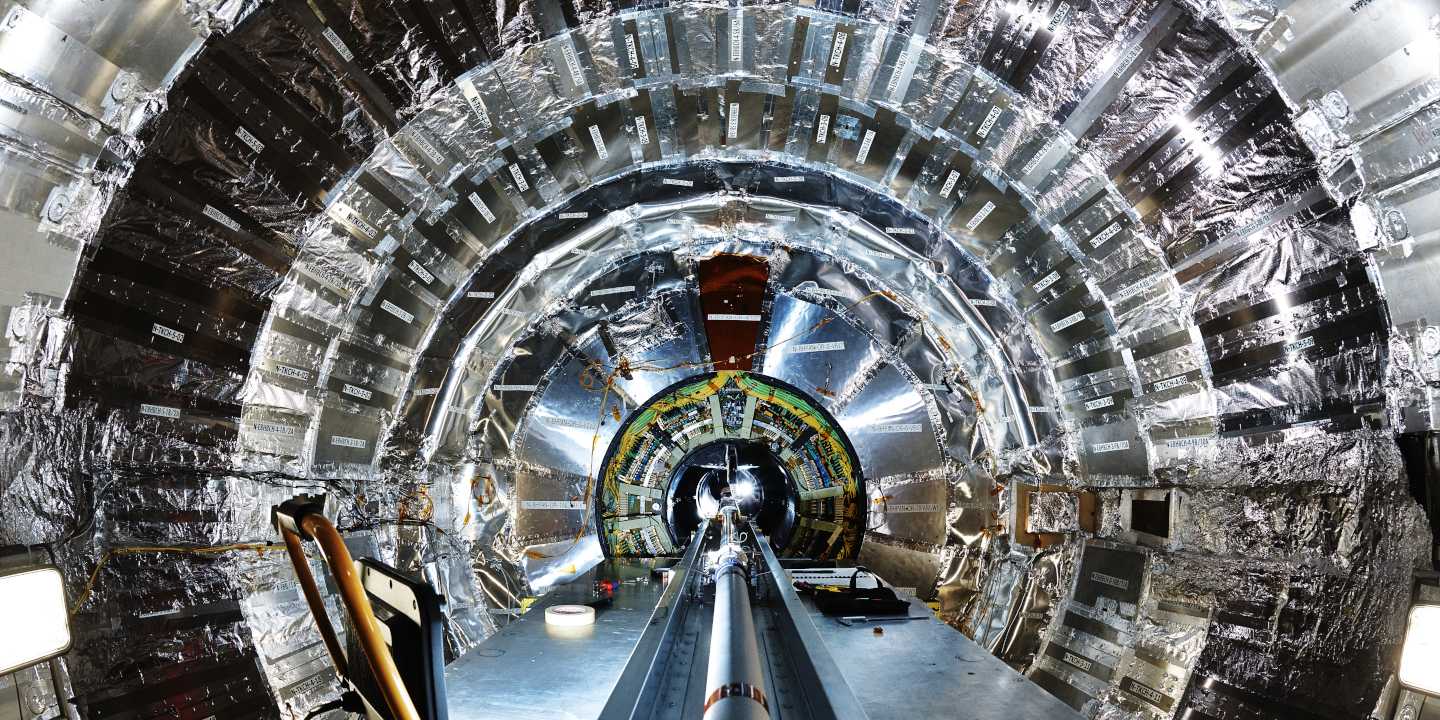
To search for new physics, cast a wide net to sieve through particle data
Thea Klaeboe Aarrestad talks about her research at CERN and retraces how she became interested in the power of machine learning methods for particle physics.
Dr Thea Klaeboe Aarrestad is an SNSF Ambizione Fellow in Professor Günther Dissertori's group in the Institute for Particle Physics and Astrophysics. She was recently awarded the external page Young Experimental Physicist Prize from the High Energy and Particle Physics Division of the European Physical Society (EPS) for her outstanding contributions to experimental particle physics. We spoke with Aarrestad about how she came to explore the power of machine learning methods for her research.
What was your reaction when you were informed that you were awarded this prize?
I was at the airport, on my way to a conference, when I found out about this! I was definitely surprised, and very happy too.
The award acknowledges the tremendous impulse you've given to machine learning techniques for particle physics research at the Large Hadron Collider (LHC) at CERN. How did you become interested in this line of research?
For my master's thesis I used multivariate machine learning (ML) methods, which are a precursor of what we do now, so back then I was already interested in new ways of enhancing any potentially relevant physics signal with ML algorithms. Later, as a PhD student, I became increasingly curious because the field was moving so quickly, and I could see how machine learning offered this really exciting way of doing research in particle physics. For the final part of my thesis, I proposed to my supervisor that I work on a deep neural network for data analysis: it was amazing to see how the other methods I used in my thesis got instantly outperformed by the deep neural network.
I spent three years of my PhD looking for something new in LHC data, tuning my data analysis with highly sophisticated tools to enhance any potential signature of physics beyond the Standard Model (SM). We were hopeful, but we didn't find anything. To me, it started to feel increasingly odd to look for such specific signatures in our data: there had to be a way to cast a wider net when looking for deviations from standard behaviours, a way to look for multiple features at the same time in that vast amount of data.
We know that new physics is there, but we face two main challenges. The first is that we have this large amount of SM background data, and we look for tiny deviations from SM predictions that can be confirmed with a high degree of accuracy – the famous statistical 5-sigma level. The second challenge is that the experiments generate terabytes of collision data, which means we can only read a very small fraction of them: in practice, we have to make very fast decisions as to whether we keep or get rid of a given data set. This kind of selection can work well when you know what you look for, take the Higgs boson – then you can motivate well your selection criteria. Now, however, we run much more open-ended searches and so would like to select data in a minimally biased manner.
So how can we limit analysis biases to the minimum and make our searches for tiny deviations from the SM more efficient? Deep learning techniques were already applied to anomaly detection: an example is that of credit cards transactions, where you want to detect anomalous and potentially fraudulent activity. These algorithms are not fed the standard behaviour of a credit card owners – they learn them from data. If you design the deep learning network correctly, it picks up the features from your data set and learns to recognise outliers with respect to what you call the bulk of the data. At this point we thought, well, this is exactly what we'd like to do: learn in a way that's unbiased and look for deviations from the bulk of our SM data. The ML tools we developed allow us to analyse data by asking the question: based on what we detected, and without adding a specific hypothesis, is there a significant statistical deviation? Thanks to this strategy, we could run a single analysis to search for more than 50 potential signatures in our data set. This new ML approach to LHC data analysis is part of what the EPS award credits.

The prize's announcement also mentions your contribution to the first anomaly-detection-based trigger for some experiments at CERN. How does this improve the way data are handled in large particle physics experiments?
If the way we analyse data is a crucial aspect, another key point has to do with the trigger systems we use for the big experiments at the LHC. As I mentioned earlier, we look at a very small fraction of the data collected by underground detectors. From about 40 million collisions/s that are recorded underground, we send about 100'000 collisions/s to the surface. Then we cut this further to about 1000 collisions/s, as we cannot store and analyse more.
Our ML tools were developed on this very small subset of collisions, but the ideal scenario is to be as model-agnostic and unbiased as possible from the very start: this means bringing our tools to the filtering process that happens underground. That's non-trivial, and here's why: the data initially stored in the underground detector are transferred through high-speed optical links to a radiation-shielded cavern right next to the detector within 3 us. At this stage, there's an ultrafast reconstruction and filtering of the data on firmware knows as field-programmable gate arrays (FPGAs). FPGAs aren't straightforward to program, and our goal was to put deep neural networks on FPGAs while making sure they can make decisions within 50 ns – every algorithm running on an FPGA adds to the latency of the system, which is 3 us, so each of them must not exceed 100 ns.
Nobody in the world needed neural networks to be so fast, and we wanted them to be highly accurate too! To achieve this goal we developed a lot of new techniques that turned out to have exceptional performance, not only in terms of speed but also of reduced power consumption. This is how interest in our work reached beyond particle physics and, over time, led to collaborations with industry: our networks are very energy-efficient, and this is relevant for some industry applications.
In 2024, CMS and ATLAS were the first large particle physics experiments at CERN to use ML-based triggers for data collection. This means that the selection algorithm based on our tools was added to other, more standard triggers: as soon as one of them finds a potential deviation or anomaly, it tells the detector to release that batch of data and send it to the surface. For the moment these two experiments are the only ones that have incorporated our tools in their data filtering processes, but our vision is for every experiment at CERN to be able to use our tools, independently of which type of FPGA they have.